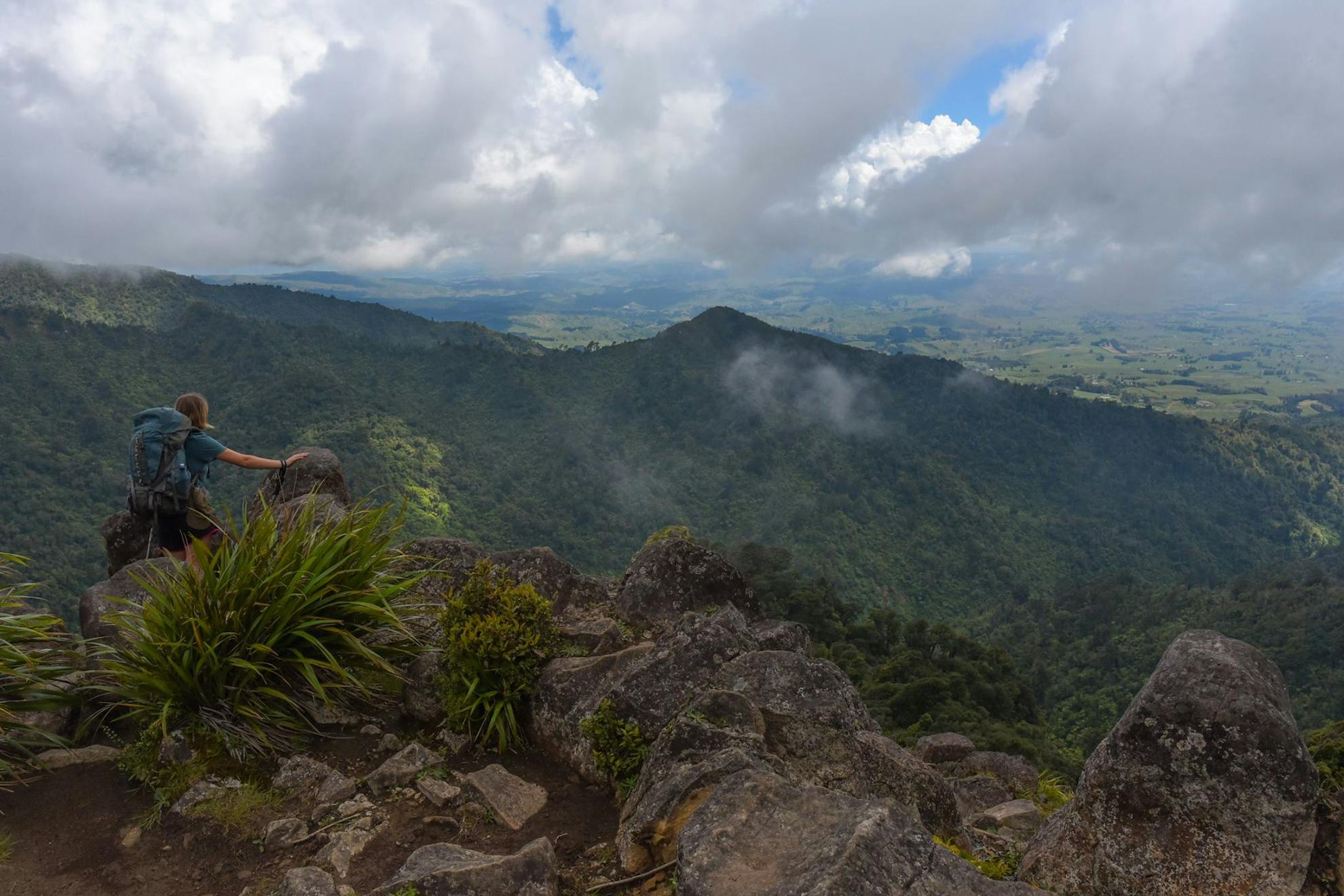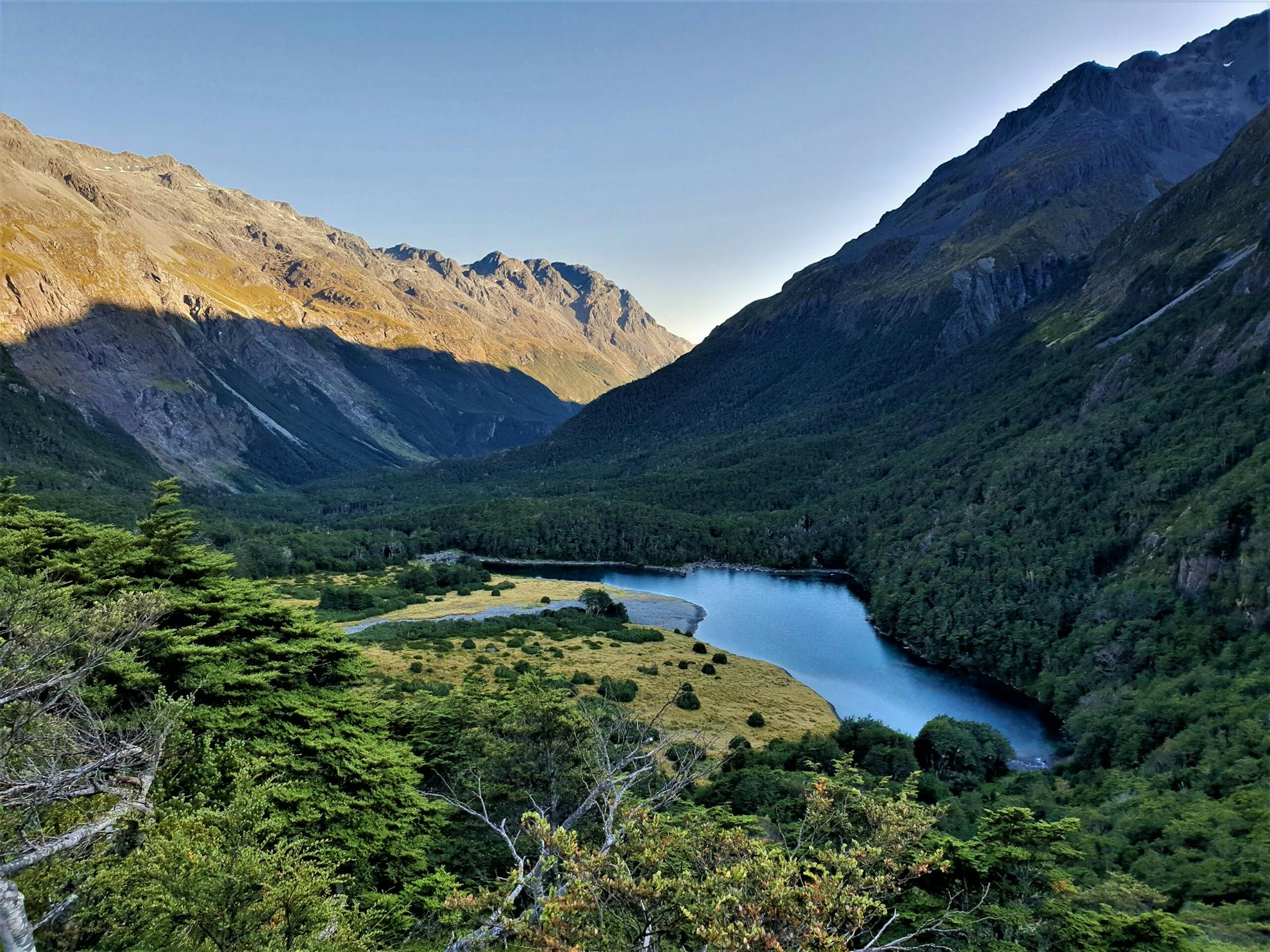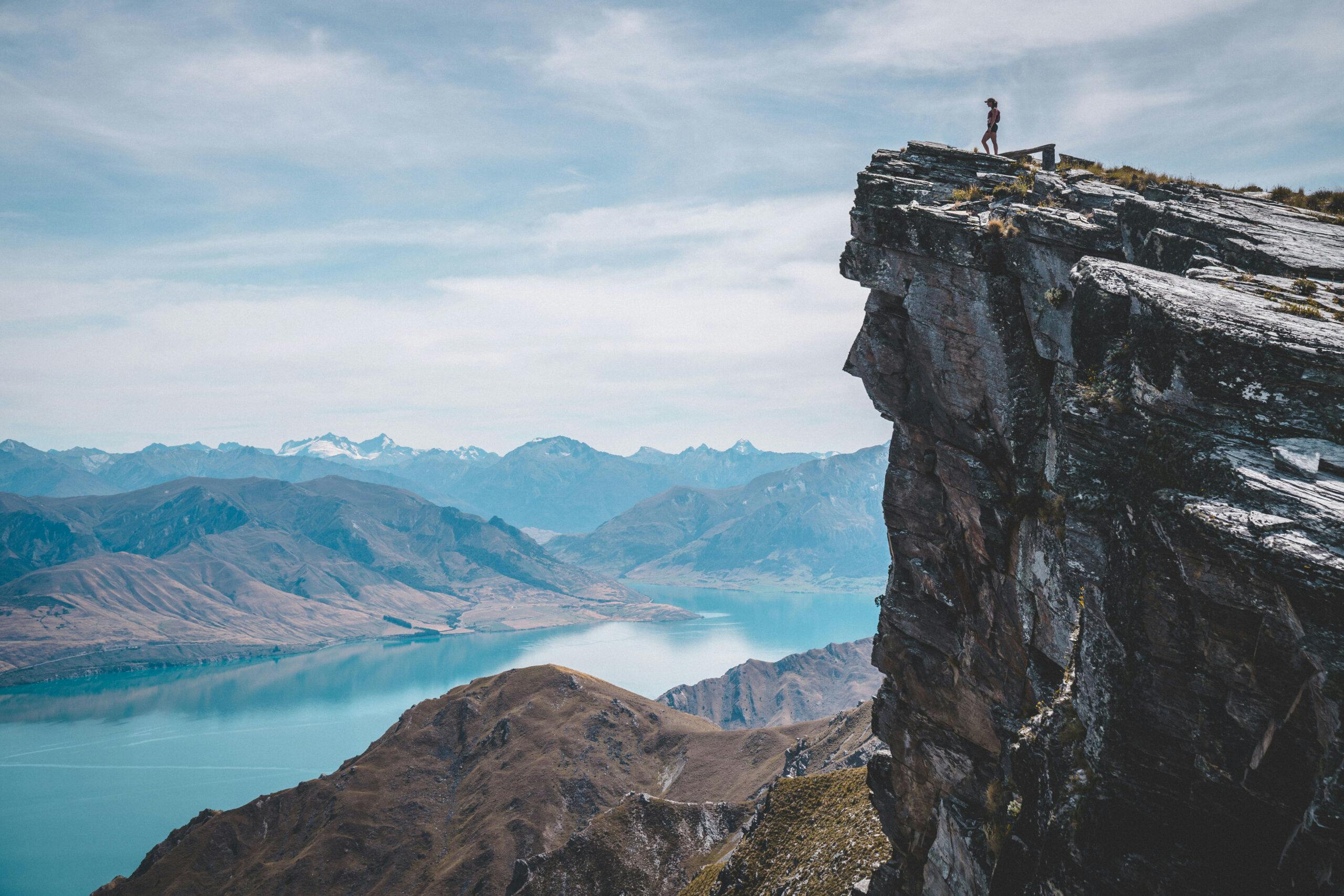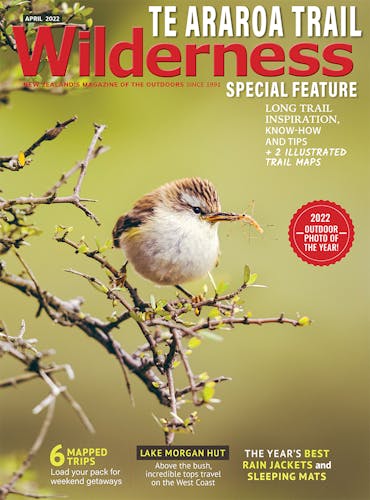There are innumerable good nights on Te Araroa, but nothing beats sleeping hundreds of metres above sea level, with the mountains as your mattress and the sky as your blanket. Here are some of the best sleeps one TA walker had.
The sky dazzled. Colour pops of blood-orange and fuchsia-pink, rubbing into the horizon like a gaping wound in Earth’s atmosphere. Cameras clicked. Capturing an elusive sunset from Mt Pirongia, the highest point in the Waikato.
By all accounts it is notoriously difficult to get a decent, camera-worthy sunset from Pirongia’s Pahautea Hut. Clag and rain are common at 900m, not the stuff for Instagrammable photos.
But tonight was the night. The 20-bunk hut and nearby campsite was full. The photographers had been waiting since mid-afternoon and weren’t disappointed. I watched from my bunk bed in awe, face pressed to the window.
I was first up next morning. In the distance, above the horizon, were the profiles of Mt Ngauruhoe and Mt Ruapehu. Soon though, the photographers were out, camera’s ready; waiting. I left them to it and went on my way.
There are stunning sunsets down south, too. In Otago, from the 1578m Breast Hill, the setting sun can turn the tussocked hills to fire and the blue of Lake Hāwea to gold. In the distance, Tititea/Mt Aspiring juts above the other crags.
A short scramble from the summit and into a sheltered eastern dip, is the eight-bunk Pakituhi Hut, all shiny and new. It was warm and cosy, smells of fried garlic greeted me, and a friendly wave. Day-trippers from Lake Hāwea. A bottle of red wine opened on the table.
Come morning, the valley below the hut was bathed in lavender, the sun not yet reaching the tops. As the sun rose, I descended, a good night’s sleep setting me up for the 950m steep drop to town.
Now, I’m in the Tararua Range and what a difference a new day can make. The weather was perfect. Clear skies, light winds. A sublime ridgeline. Nichols Hut was nestled into the balcony of the mountain below the trail and beneath Mt Crawford.
It’s a tiny, six-bunk hut with a picture-postcard view and it was already crammed when I arrived. Claustrophobia. Later, the sun’s dying remnants streamed across the mountain tops before the sky turned apricot and pink, then blue and black. The Southern Cross glinted, pointing a clear way to heaven.
In the morning, the peaks were gone; a thick, damp clag encased the window. Should I stay or should I go? The hut collectively agreed. We left. The weather was the decision-maker; it could turn worse.
Sometimes, however, the decision is to arrive and stay, even when the shadows are short and the weather good. At Rintoul Hut, deep in the Richmond Range was such a time, especially after a bruising morning of two summits and scary descents. The six-bunk hut was light and cosy, and I instantly made it my home.
Late into the night, I ventured outside. Stars were like diamonds beside a sliver of gleaming moon. Back in bed, on the top bunk, I looked out the windows. The lights of Richmond quivered in the distance. A Friday night, people partying, lipstick and heels. Here I was, unwashed and skanky – and on top of the world.

But to get to the top of the world, you always have to go up. That’s so for Crooked Spur Hut in Canterbury’s Te Kahui Kaupeka Conservation Park. I’d lost count at 30 of the number of times I’d crisscrossed Bush Stream before the hour-long, calf-killing climb to the ramshackle eight-bunk hut located on a broad tussocked terrace.
Tired, draughty and built from uninsulated corrugated iron, the hut was free. But I would have paid for the view. Bush Stream meanders far below between grey giants, while a small glint of the Rangitata River shimmers in the distance. The morning was violet and luminescent – a perfect start.
A bumper breakfast would have topped it off but for me, it was muesli and milk powder. I once met a group of Germans who ate left-over pizza for breakfast. They had tramped it in hot the night before to Mangatepopo Hut, which along with a campsite sits at almost 1200m amid barren volcanic land huddled under the hulking shadow of Mt Ngauruhoe.
Given the luxuries of the 20-bunk Great Walk hut, located on the Tongariro Northern Circuit and Alpine Crossing, the group could use the hut’s gas cooking facilities to reheat the pizza. Soon the smell of hot pepperoni and cheese mingled in the air. Even the hut warden received a slice.

Other trampers take wine and whisky on multiday walks. What some might consider excess weight, three British lads deemed a celebration of a boy’s weekend in the Nelson Lakes. For two days they carried the alcohol to Blue Lake Hut at 1190m on the shore of Blue Lake, which is said to have the clearest known freshwater in the world. And the lads sat on the shore, drinking, until late then woke me and the other occupants in the 16-bunk hut when they returned.
Next morning the air was as clear as the lake. Before the sun had kissed the hut, I was off, up the hill towards the emerald waters of Lake Constance and Waiau Pass. I looked back. Blue Lake lay in morning shadow, cold but clear. I smiled. You don’t get views like that at sea level, nor a better wake-up call.








